Photographer Nguyen Ngoc Thien (currently living in Ho Chi Minh City), who specializes in underwater photography, recently traveled to remote African waters in early May 2023 to dive and film sperm whales. His photo series of "hunting" giant fish in the deep ocean received high praise from domestic photographers and left a strong impression on viewers.
“I want to make trips to find and film whales in remote seas, some of the shortlisted destinations include the French Polynesia archipelago, the island nation of Tonga in the South Pacific ; the island nation of Dominica in the Caribbean Sea or Sri Lanka in the Indian Ocean. The trip would have been made in 2020, if Covid-19 had not suddenly appeared. Then, coincidentally, the priority was directed to the East African sea, the area between the Madagascar triangle, the Reunion archipelago (France) and the port city of Port Louis in Mauritius - where I want to film sperm whales,” said Mr. Thien.
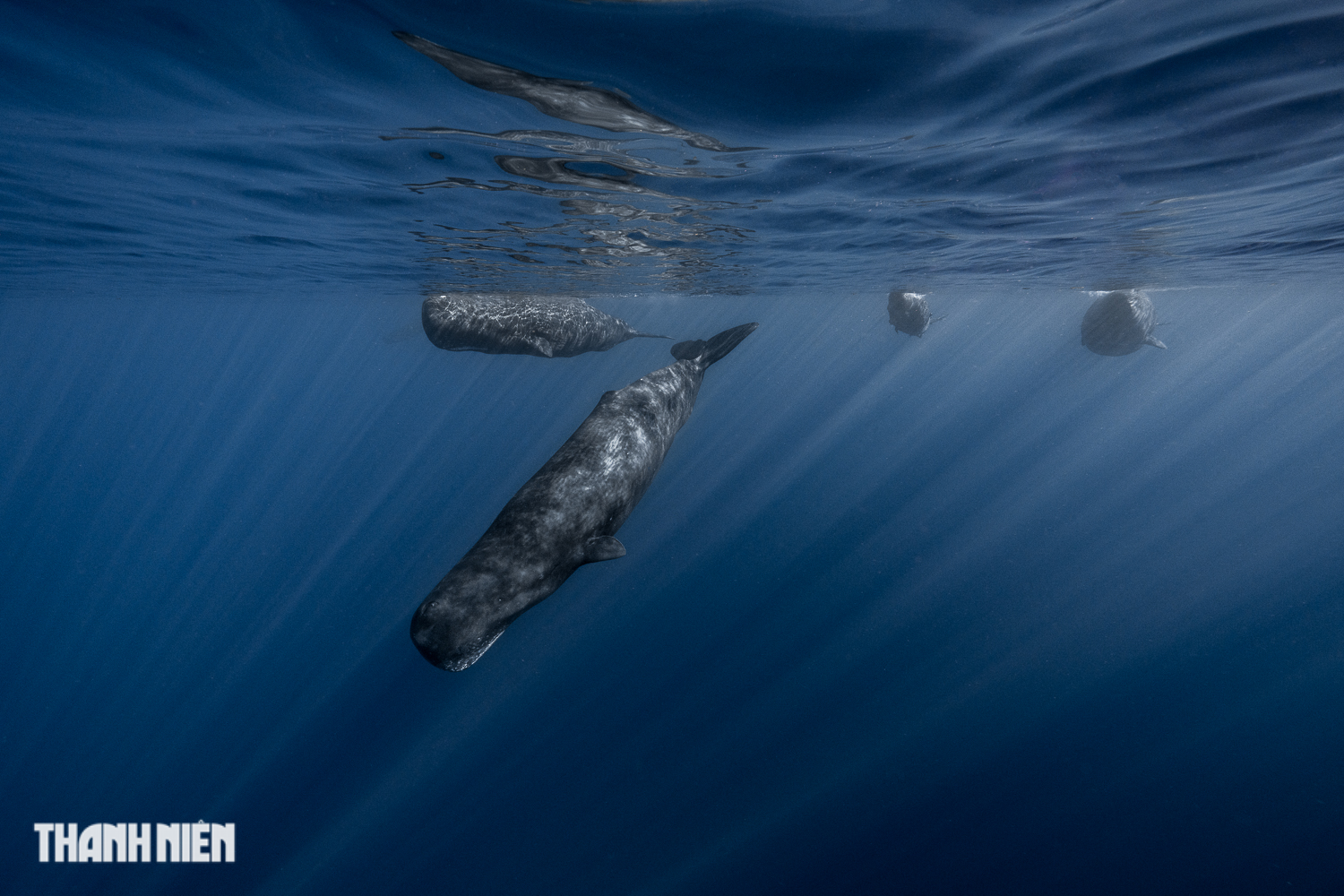
On this trip, photographer Nguyen Ngoc Thien went diving with a few close friends and was impressed by the enormous size of the sperm whale, also known as the sperm whale, the world's largest toothed predatory mammal, belonging to the whale order.
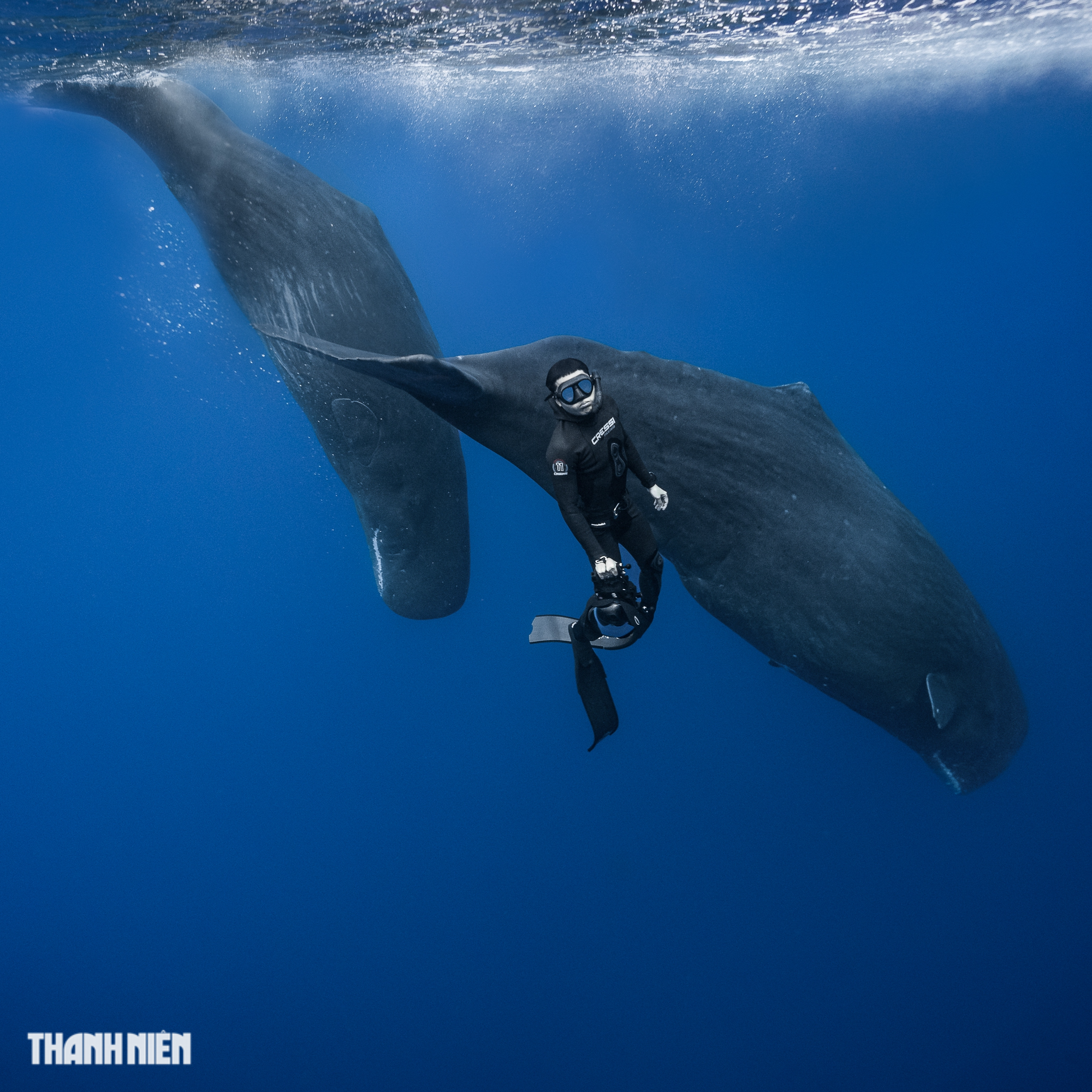
An adult male sperm whale can be 16 - 20m long and weigh 35 - 50 tons; while a female is about 10 - 15m long and weighs about 20 - 30 tons.
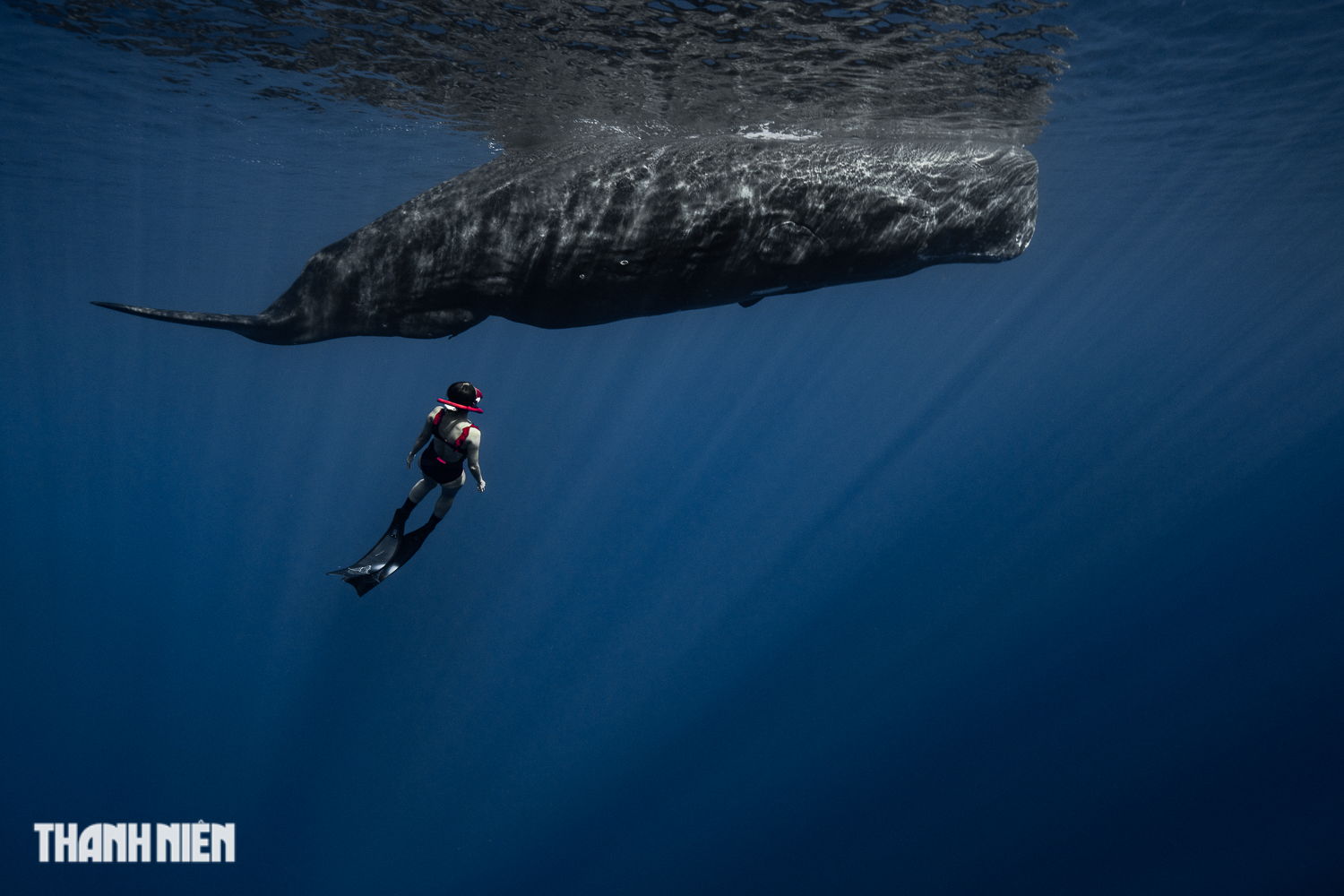
Many domestic photography experts admit that Nguyen Ngoc Thien is the "first Vietnamese photographer" to dive and professionally record and take close-up photos of this whale species in the Black Sea.
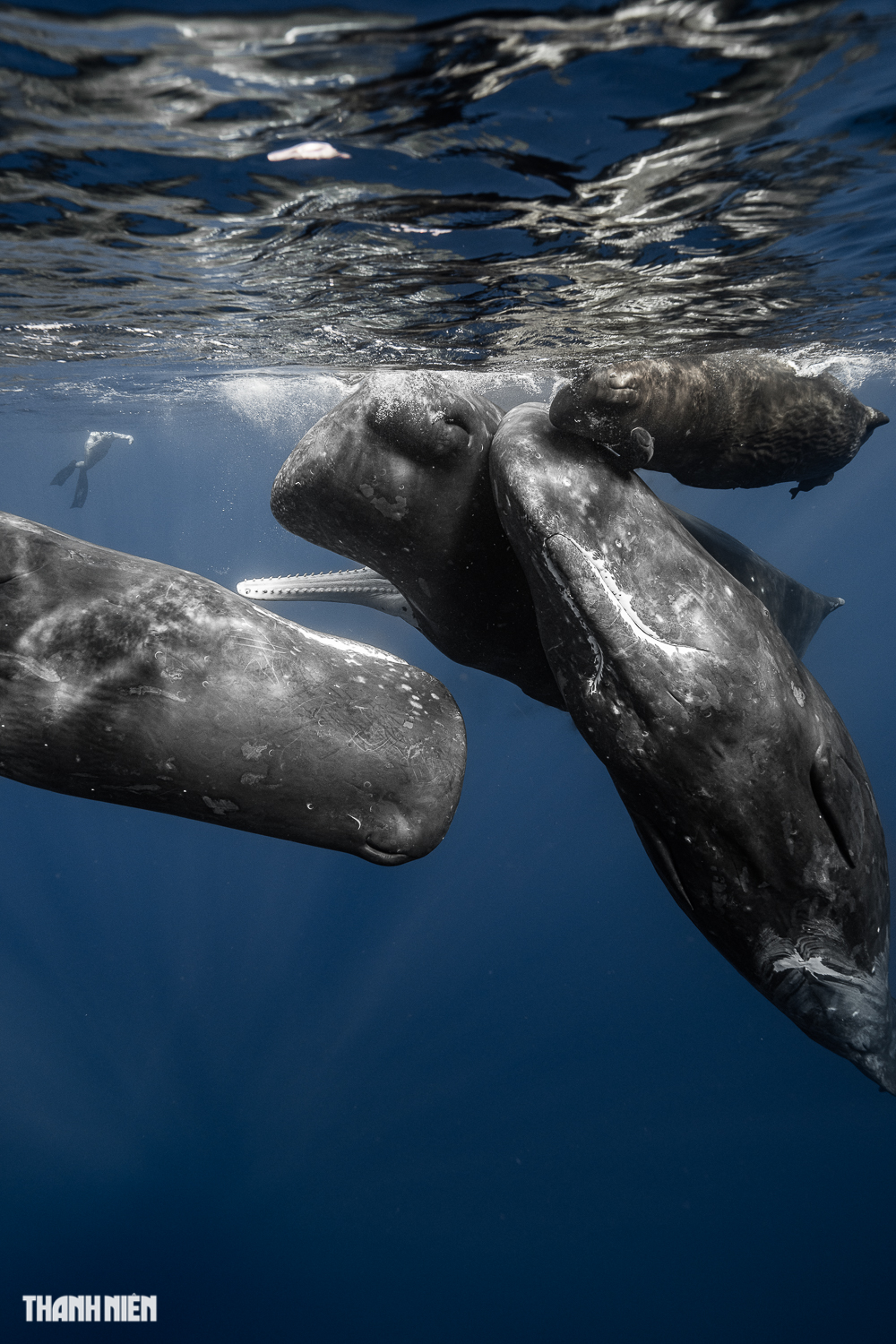
Some impressive statistics about sperm whales are that they have the largest head in the world, their head accounts for 25 - 35% of their total body length; their brain weighs up to 8kg; their heart can weigh up to 125kg
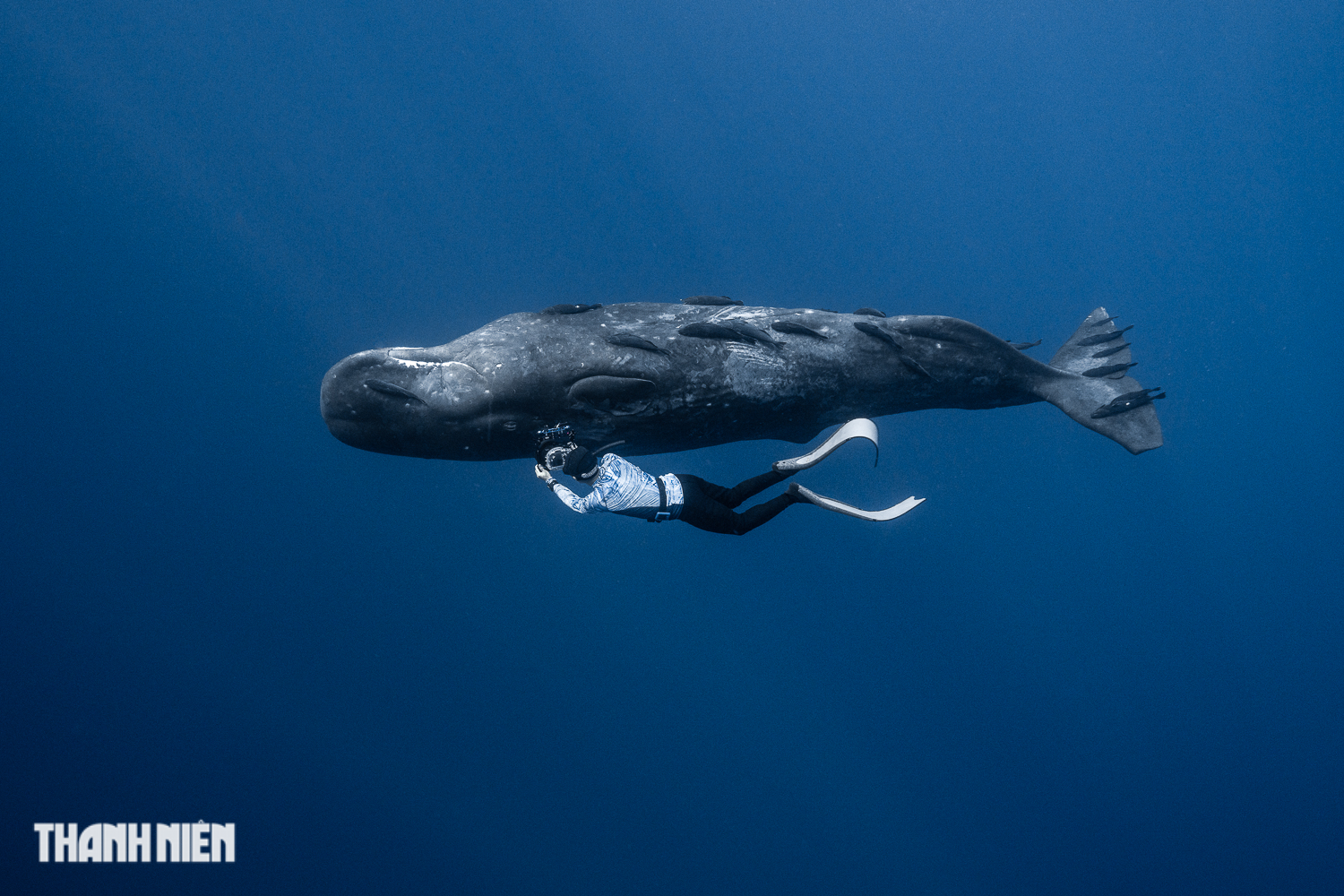
Sperm whales are one of the deepest diving species in the world, often diving 1-2 km deep to feed. Each dive can last more than 1-2 hours. Therefore, "hunting" them to capture them is a big challenge for any professional photographer.
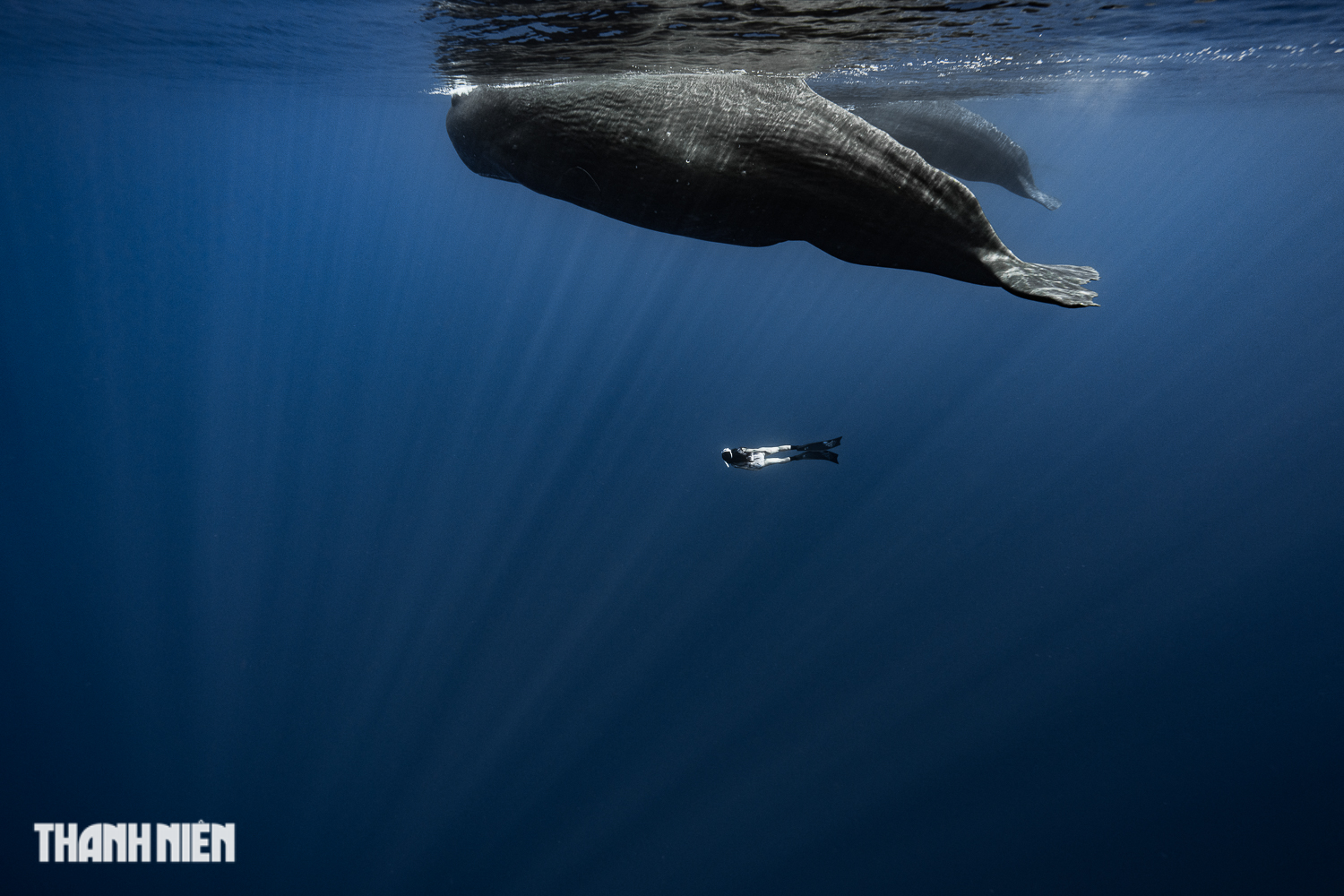
The dance of sperm whales and humans. Mr. Thien said that when diving, he heard the continuous crackling, crackling, crackling sounds in the water, which were the sounds that sperm whales used to communicate with each other.
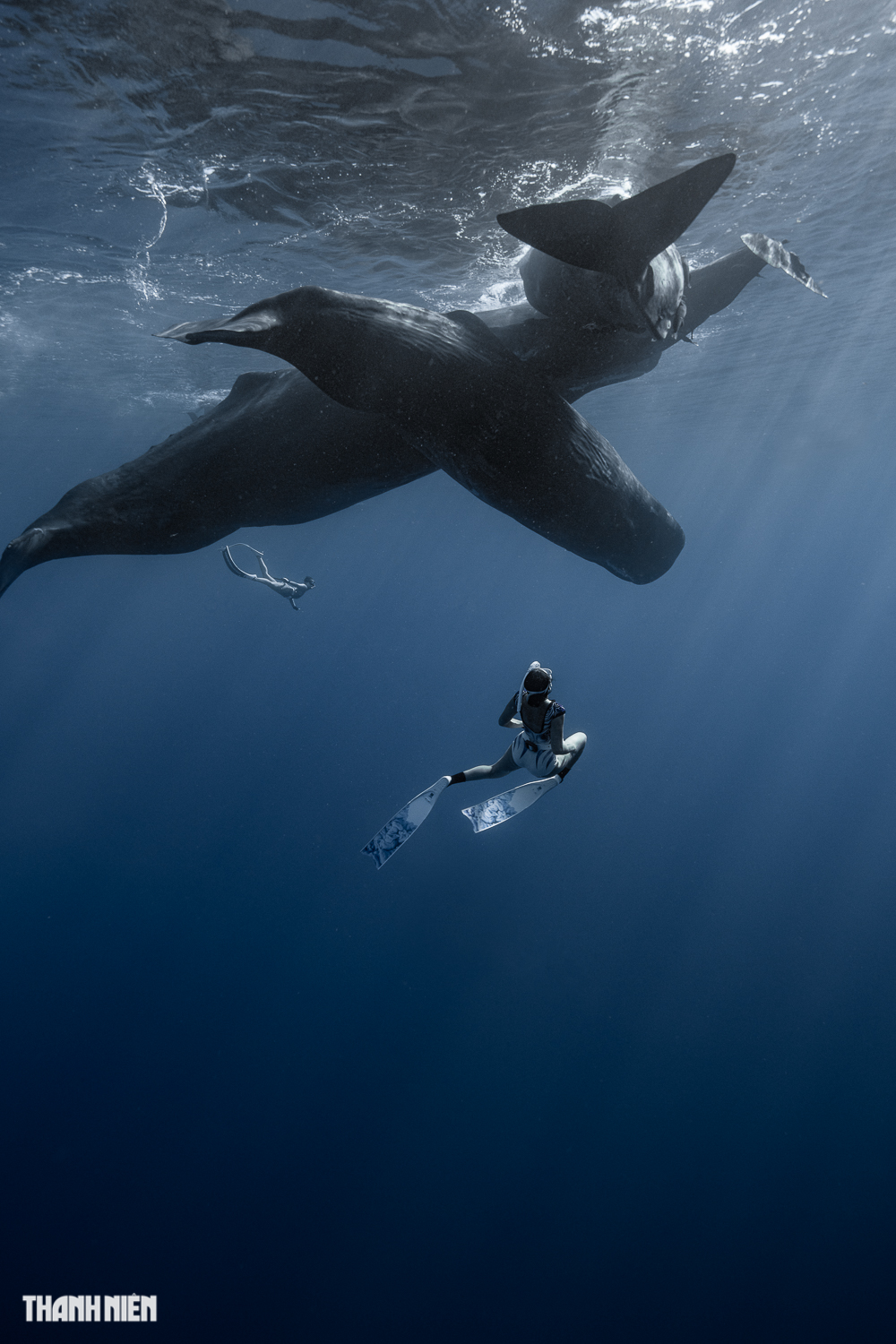
Sperm whales' diet includes octopus, squid, including giant squid, and many species of fish such as bottom-dwelling rays.
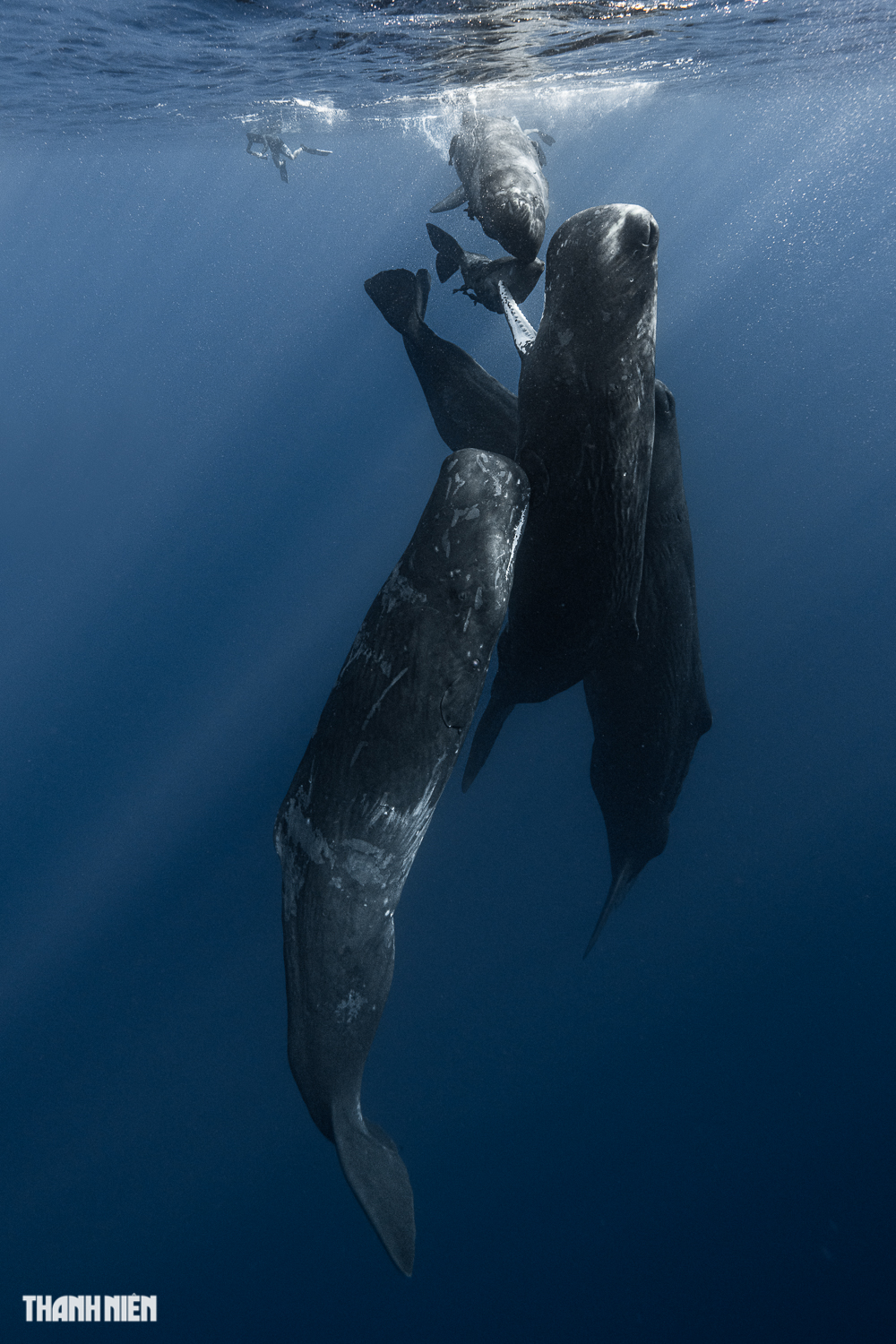
Large-scale whaling, especially in the mid-20th century, reduced the average size of sperm whales because large males were often sought after by whaling boats.
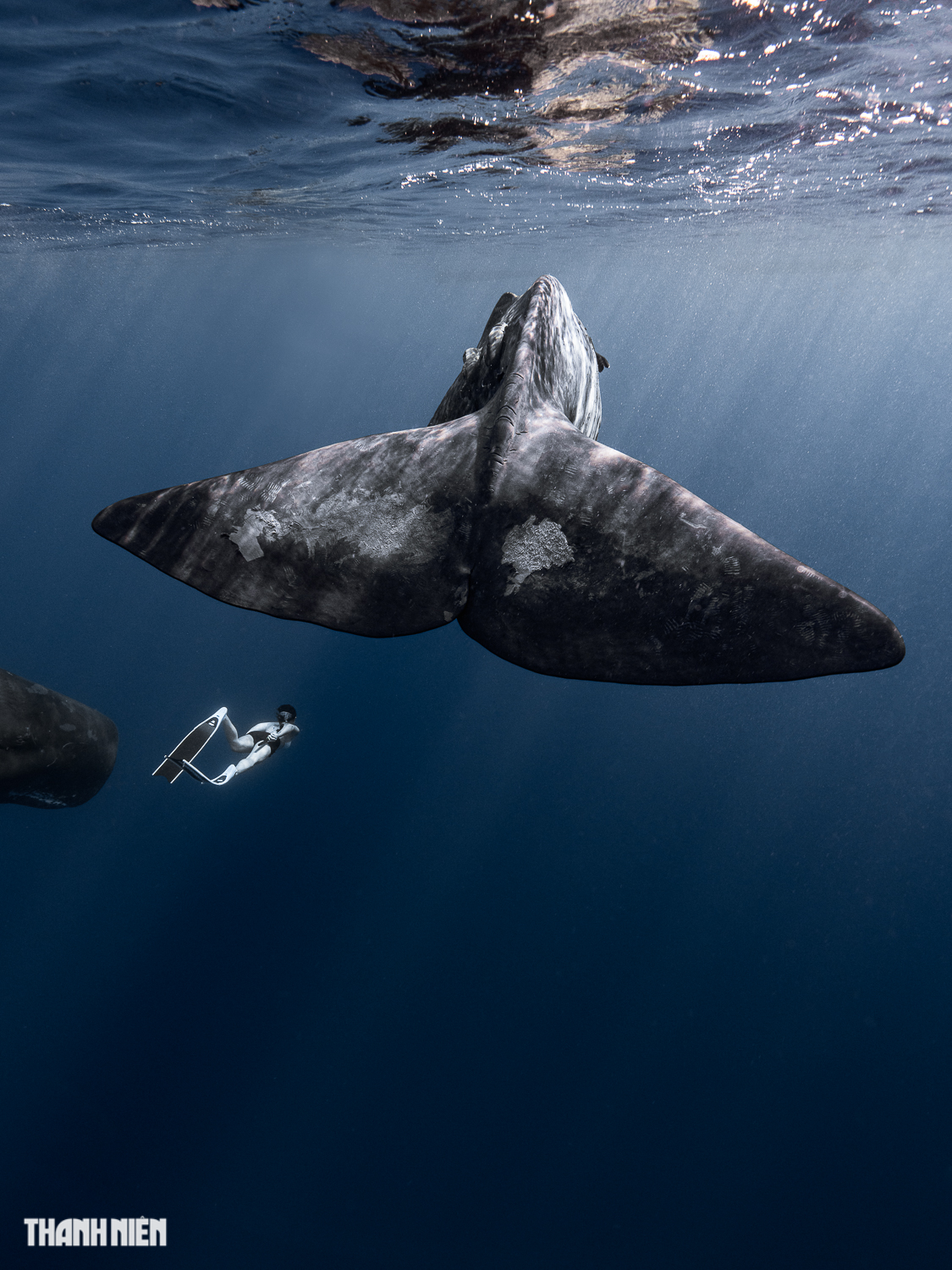
In the same frame, we can easily see how small humans are compared to the giants of the ocean. Experiencing the wonders of nature will make us see how small humans are.
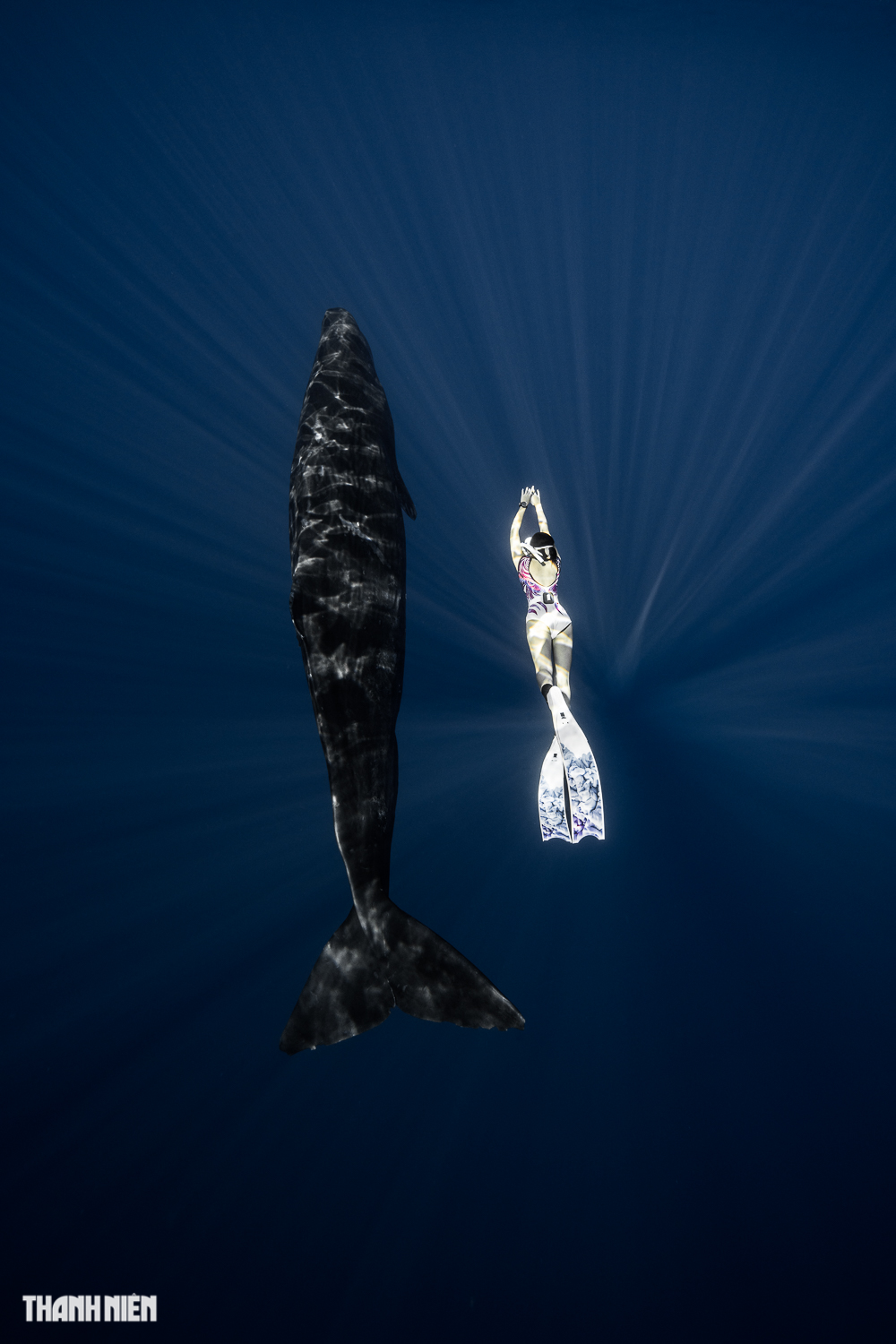
Humans have been studying whales since the 18th century, but it wasn't until 2008 that researchers published a discovery that recorded sperm whales sleeping upright under the water's surface for several minutes at a time. In the photo, a female diver and photographer Nguyen Ngoc Thien are in an upright position with the whale.
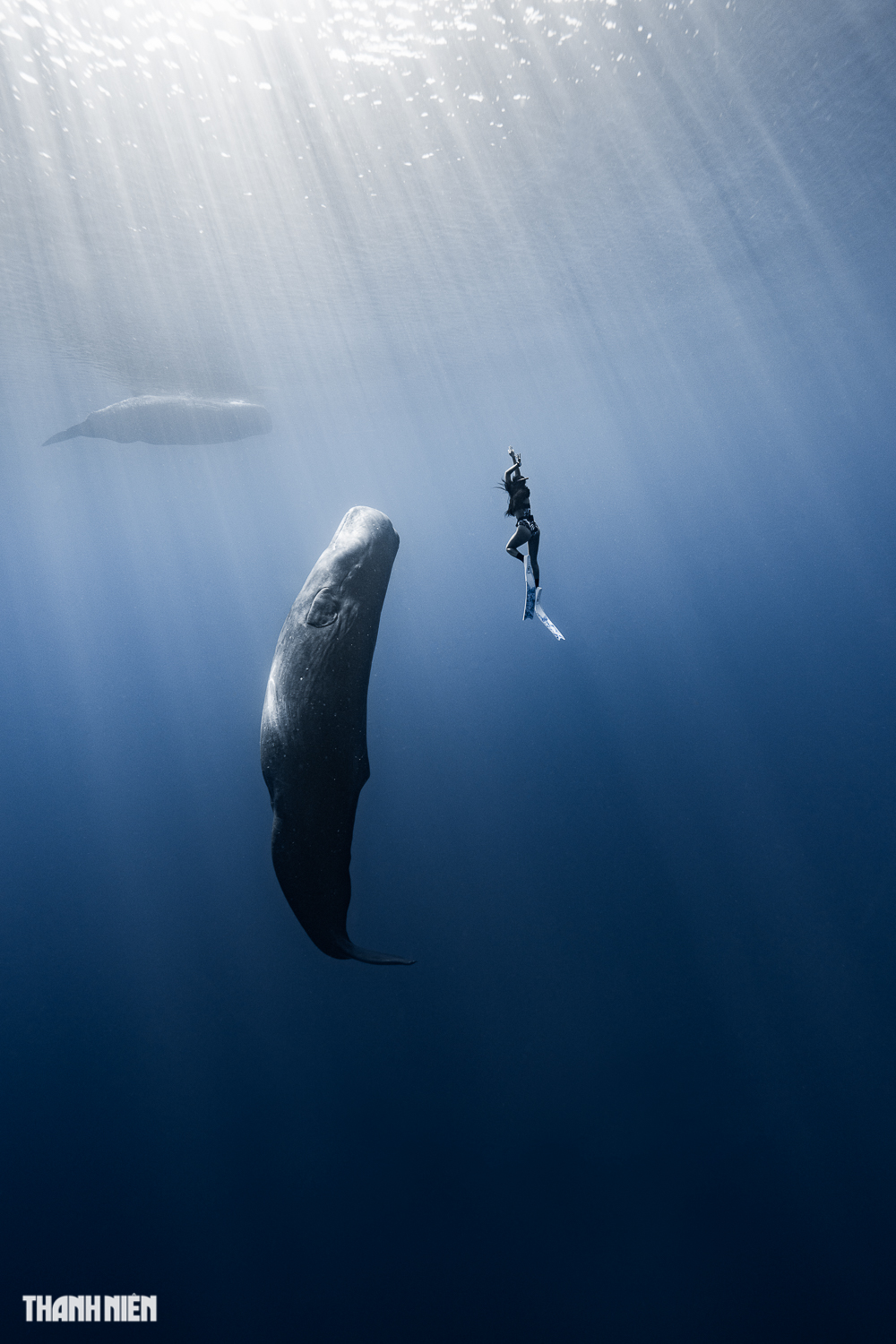
There is no definitive explanation for why sperm whales sleep upright. It is theorized that they sleep vertically to control their breathing more easily when they need to wake up, or to stay safe and alert to potential predators in the ocean such as killer whales.
“In my early years of joining the National Geographic photography community, I was fortunate to admire and learn from many talented photographers around the world, including the famous ocean conservationist and wildlife photographer Paul Nicklen, who is also the co-founder of the conservation organization SeaLegacy and Oceanographic Magazine, where I collaborated and had my images published. In the early days, when I first switched to underwater photography, I happened to admire and was truly amazed by Paul's photo of sperm whales falling into a deep sleep in the middle of the ocean in a vertical direction, like giant pillars floating in the vast zero-gravity space below the water surface. From then on, I cherished the dream of one day taking such photos and finally, I did it,” Thien shared.
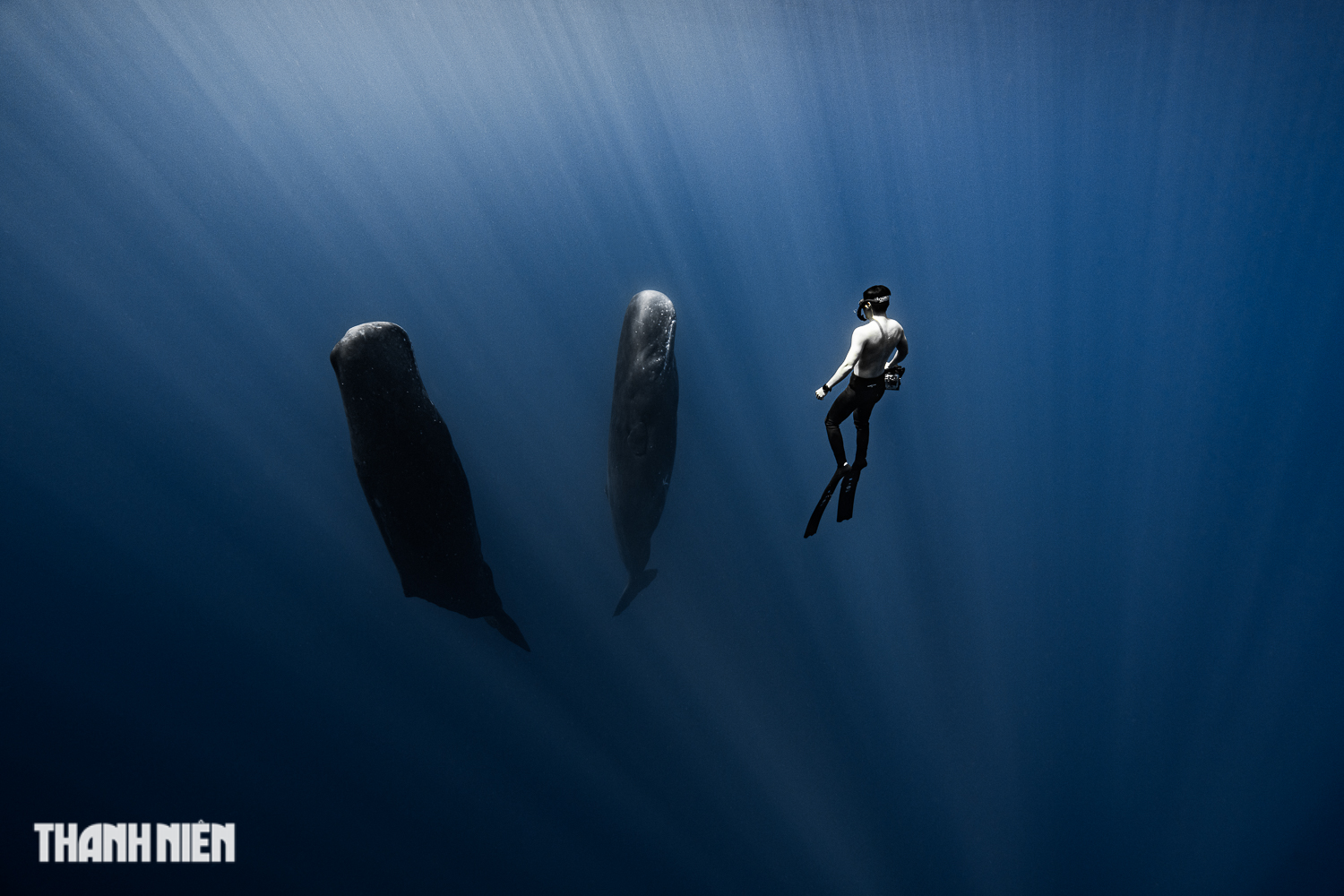
Sperm whale sleeping upright, next to photographer Nguyen Ngoc Thien
“The sight of whales sleeping standing up can be considered one of the wonders of the natural world, considered rare to this day because it is almost impossible to locate whales sleeping in the middle of the vast ocean, even normal sonar equipment is very difficult to detect because they are almost completely motionless below the surface of the water and usually do not make any sound when in deep sleep. And on the 7th day of the journey, my diving friends and I were unexpectedly lucky enough to witness such a spectacular sight of whales sleeping,” Mr. Thien excitedly said.
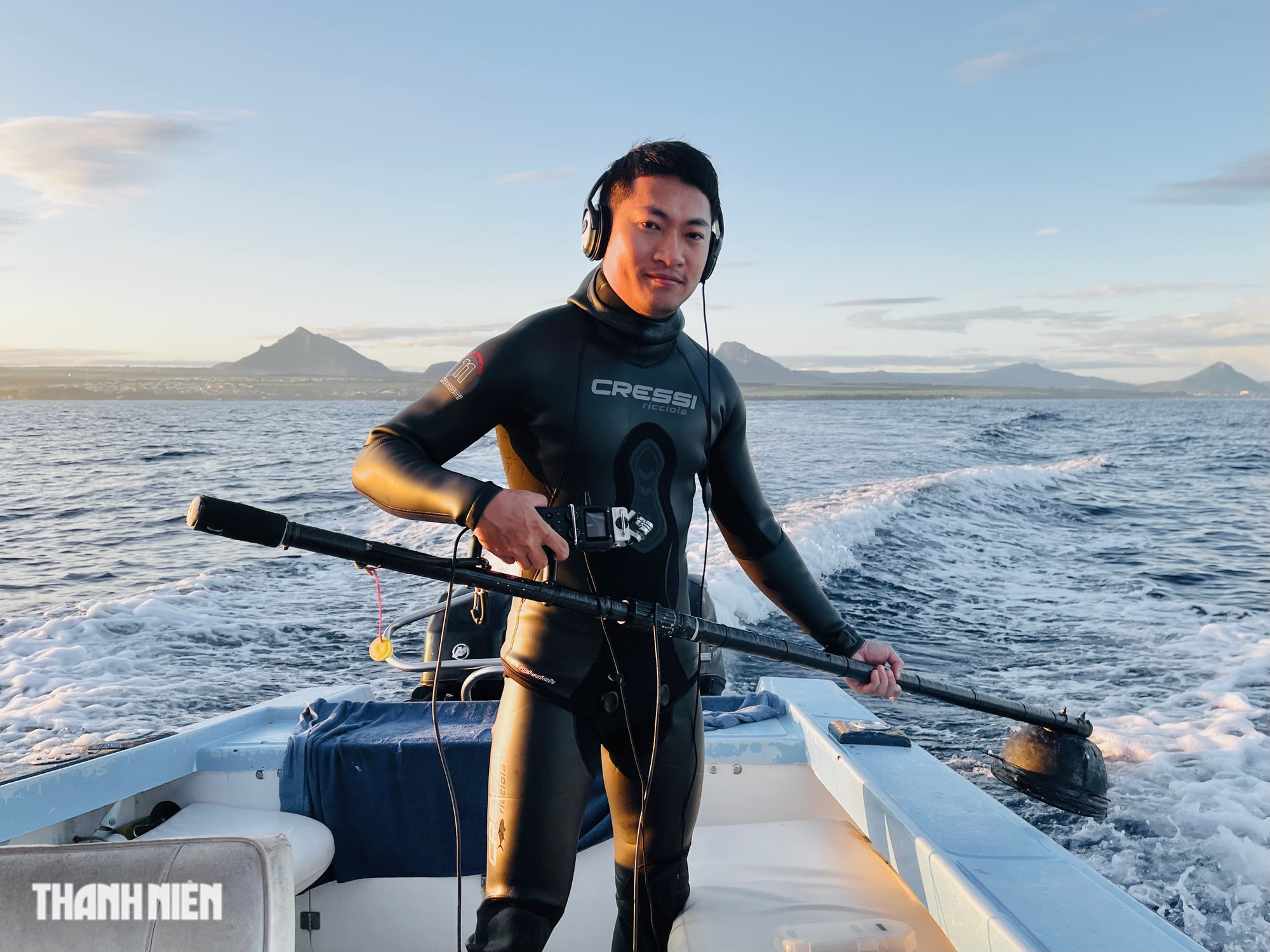
In addition to diving skills, professional diving and photography equipment are indispensable factors, including a sonar detector (photo). Every day going out to sea to look for whales for Mr. Thien is very complicated and depends on "luck", no day is the same. There are days when as soon as he sets out to sea he sees a sperm whale's water column shooting up in the distance, but there are also days when he drifts all day in the middle of the sea and doesn't see any, and the sea is vast...
Source link





![[Photo] General Secretary To Lam receives the Director of the Academy of Public Administration and National Economy under the President of the Russian Federation](/_next/image?url=https%3A%2F%2Fvphoto.vietnam.vn%2Fthumb%2F1200x675%2Fvietnam%2Fresource%2FIMAGE%2F2025%2F12%2F08%2F1765200203892_a1-bnd-0933-4198-jpg.webp&w=3840&q=75)























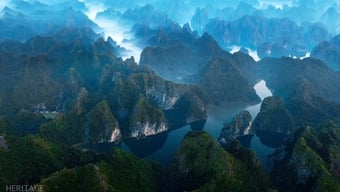

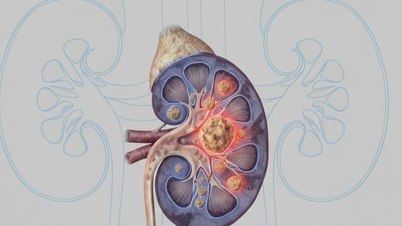


















































































Comment (0)